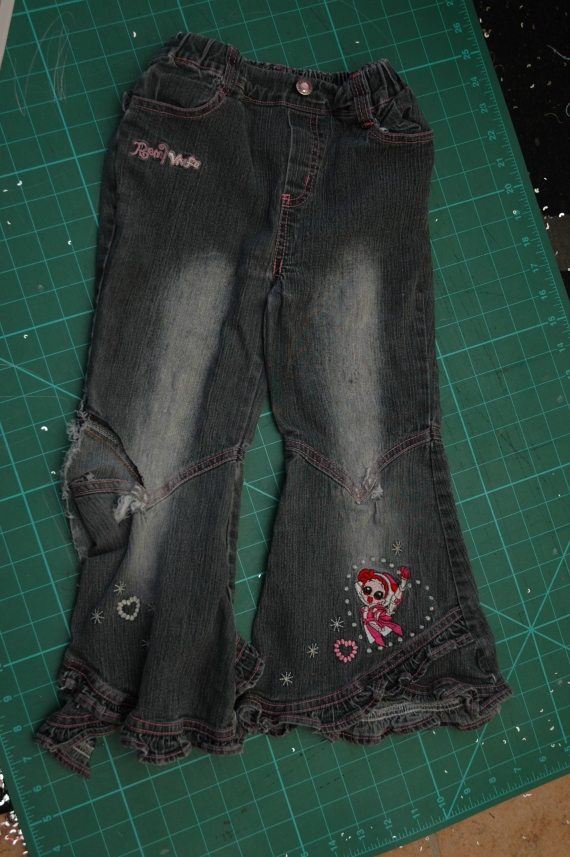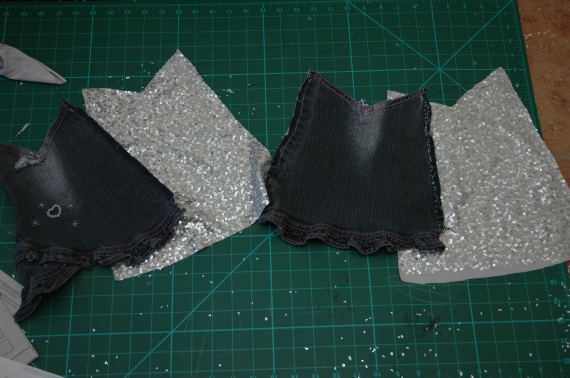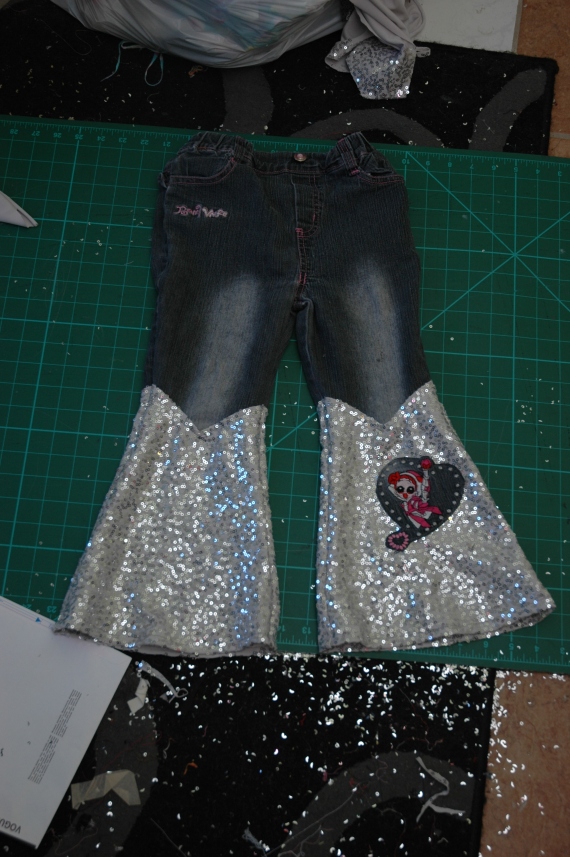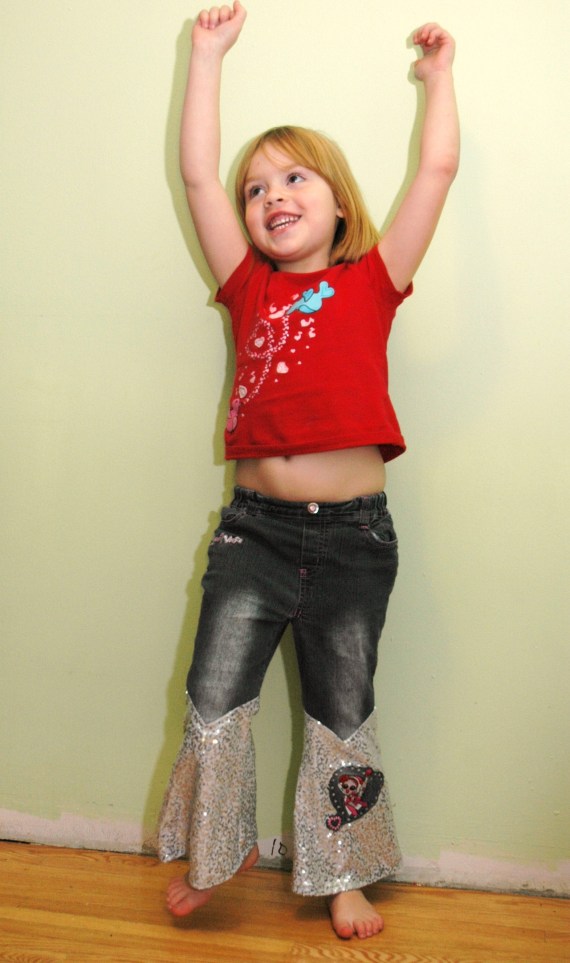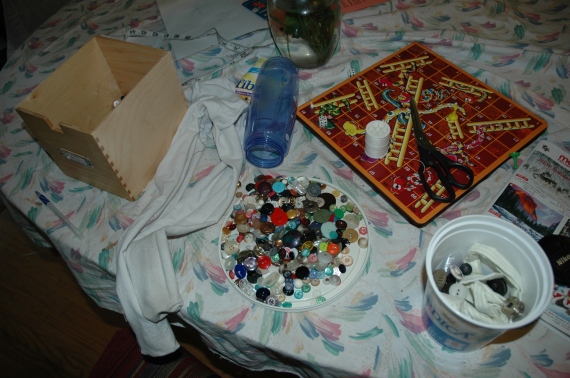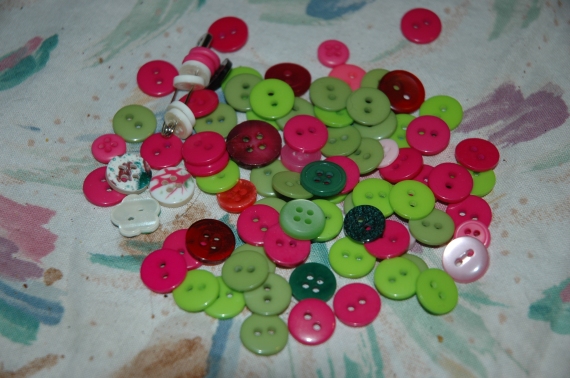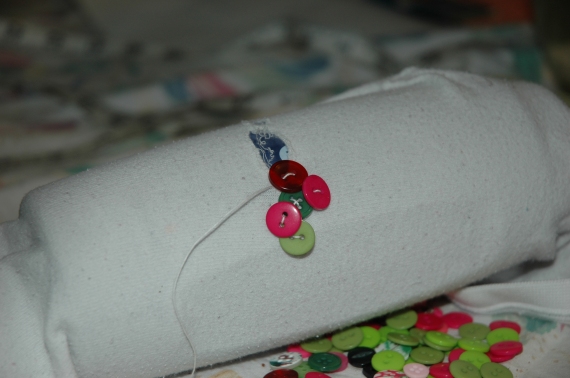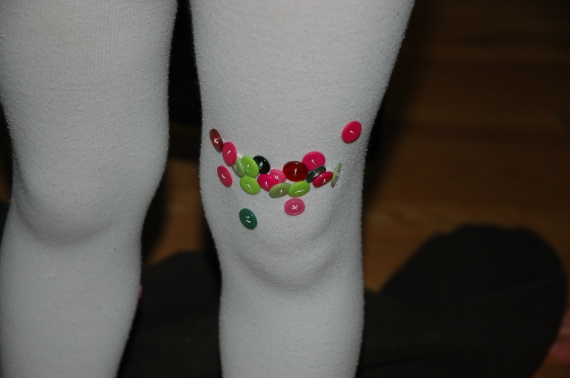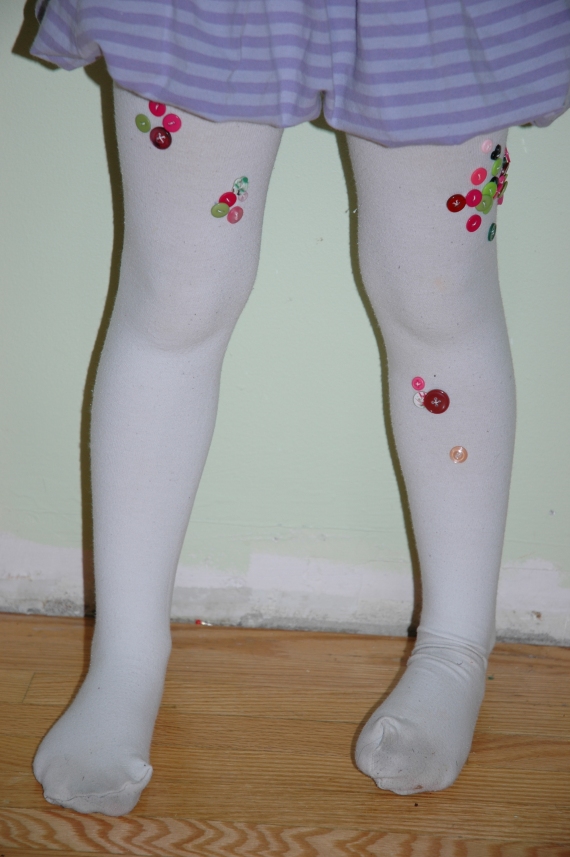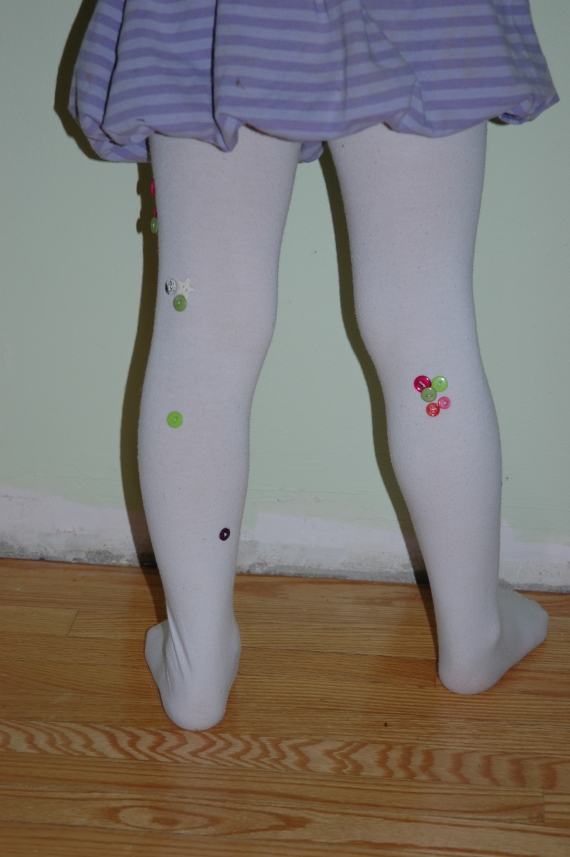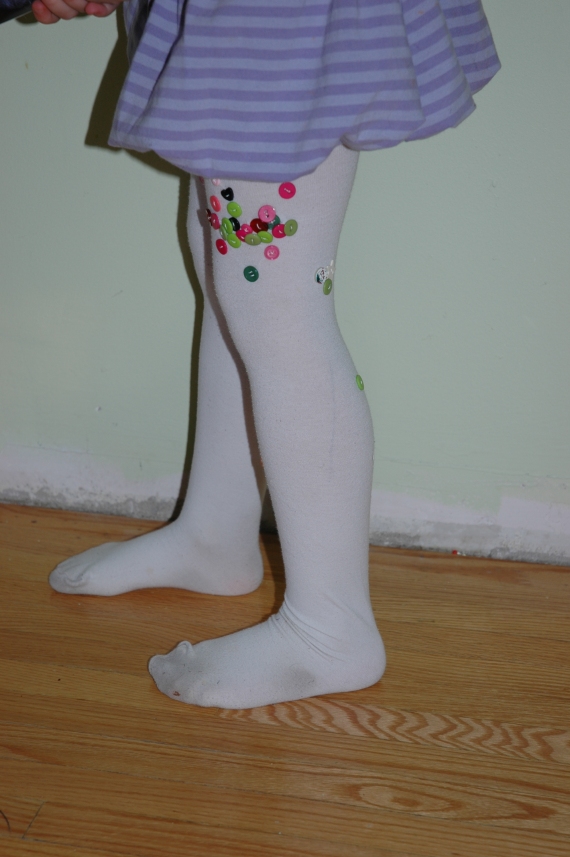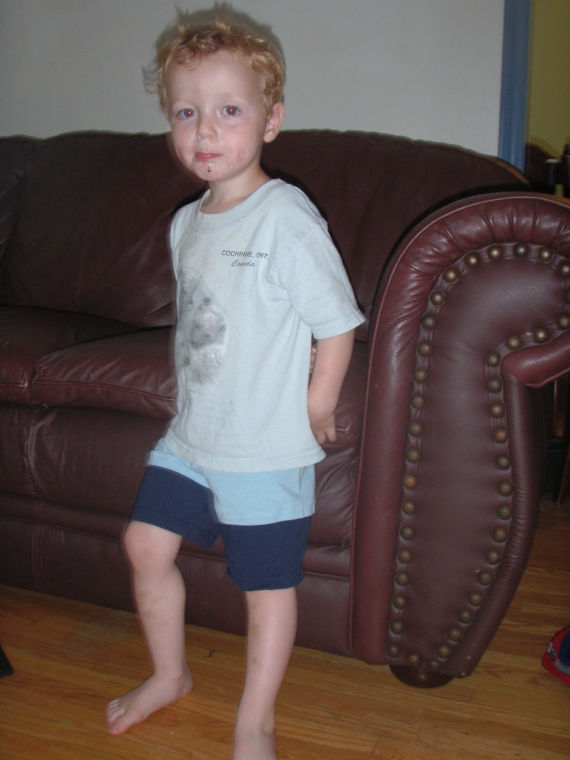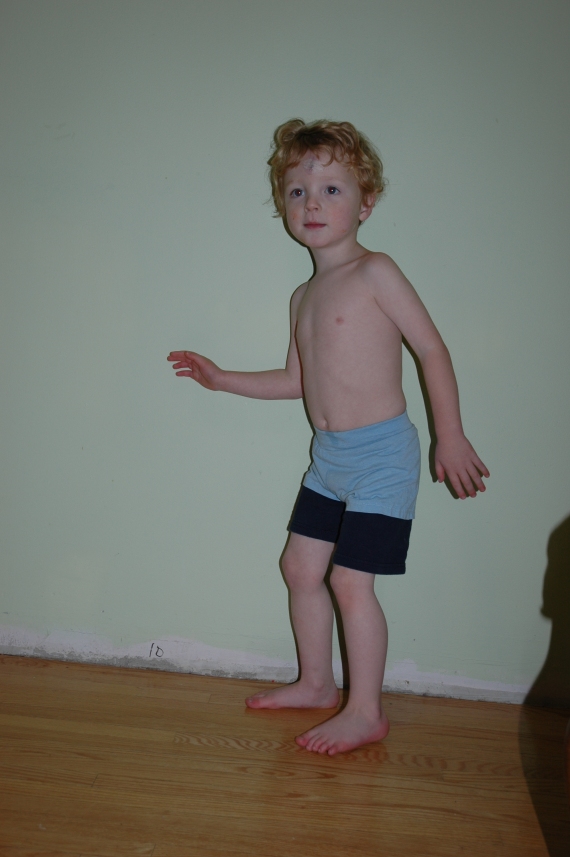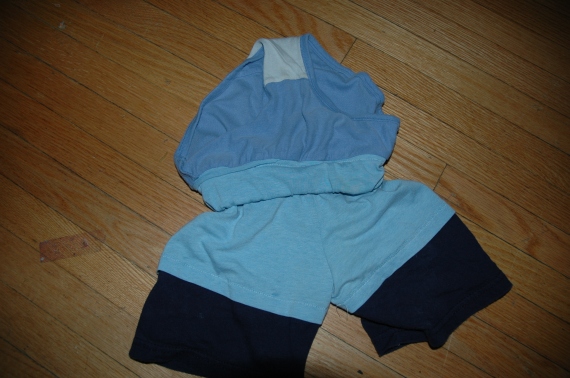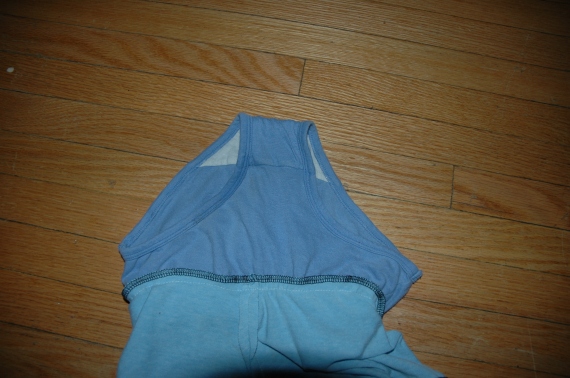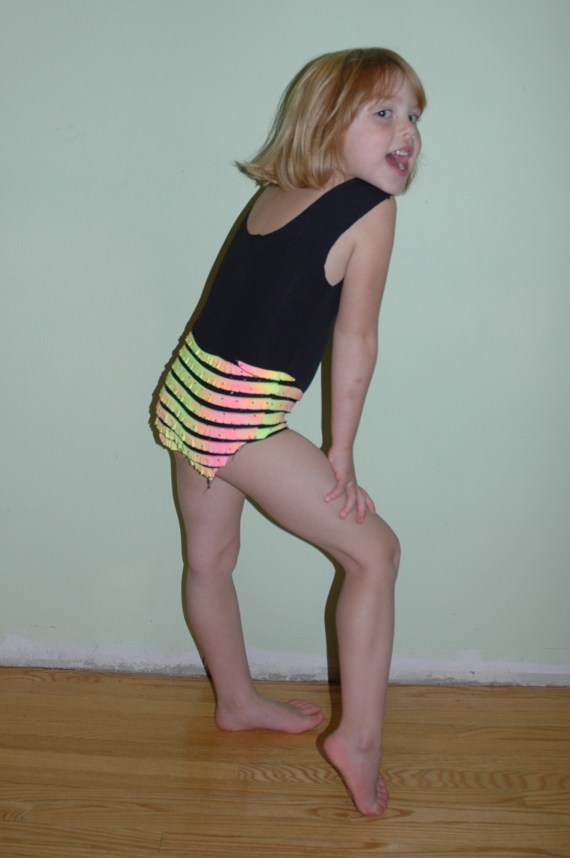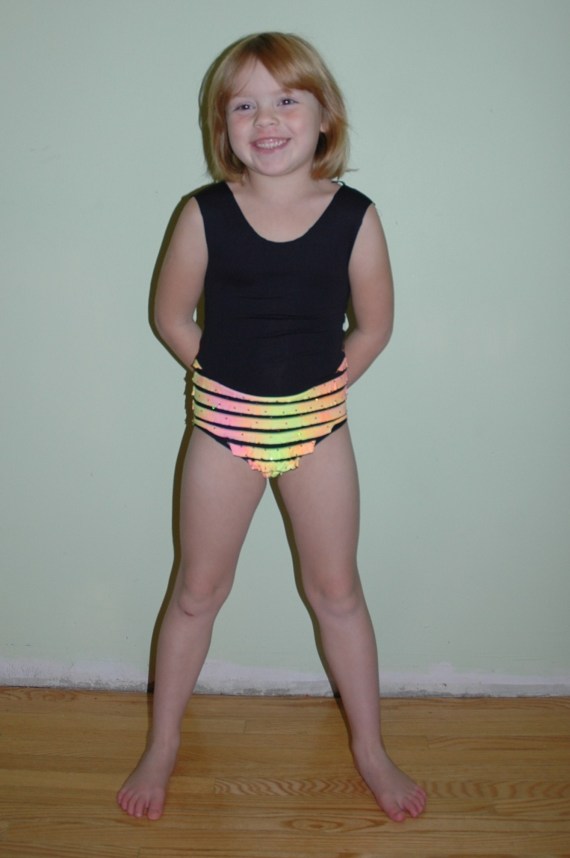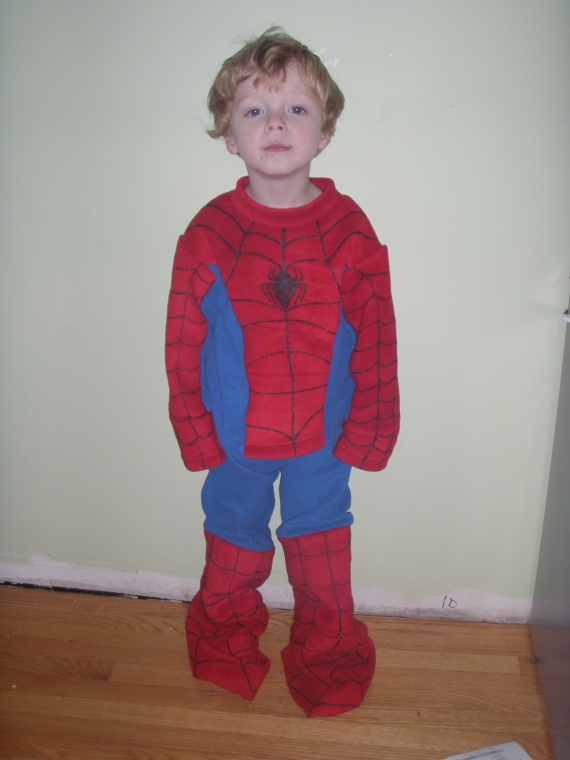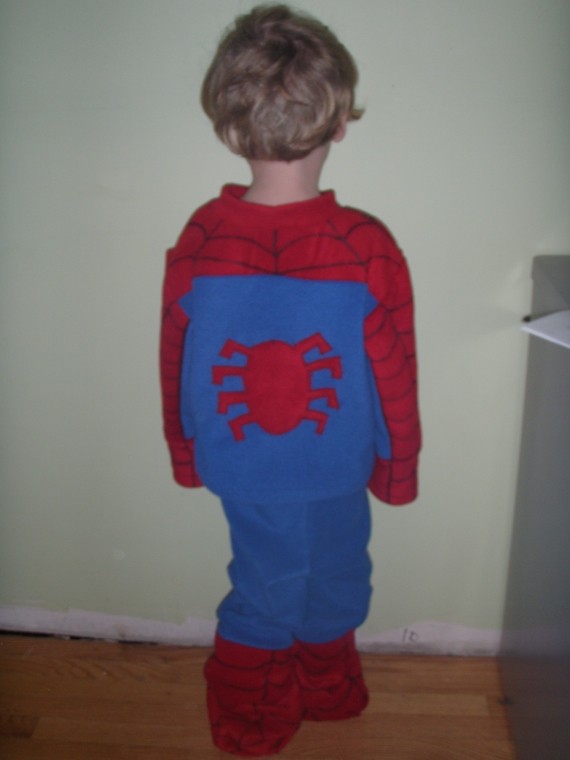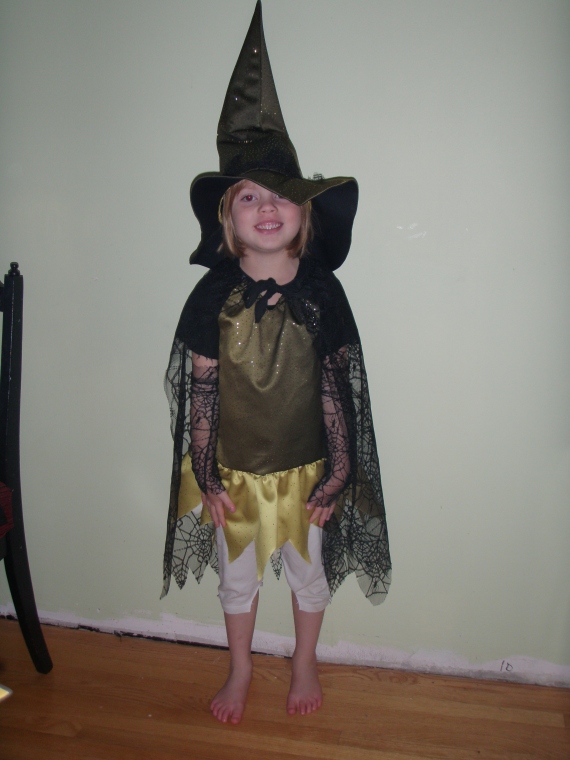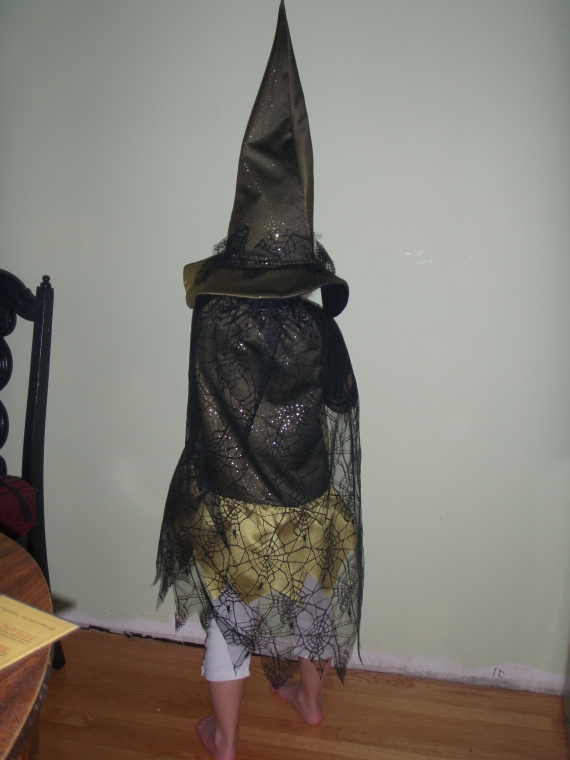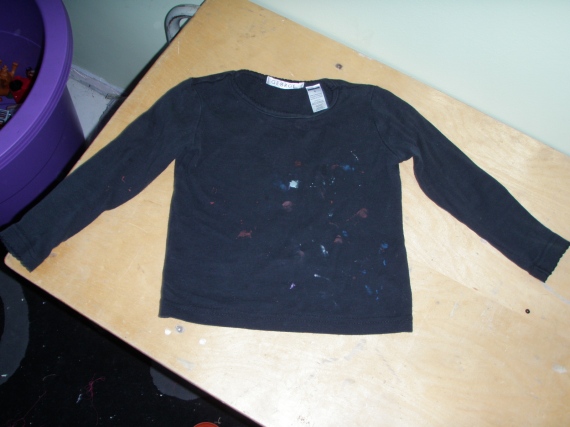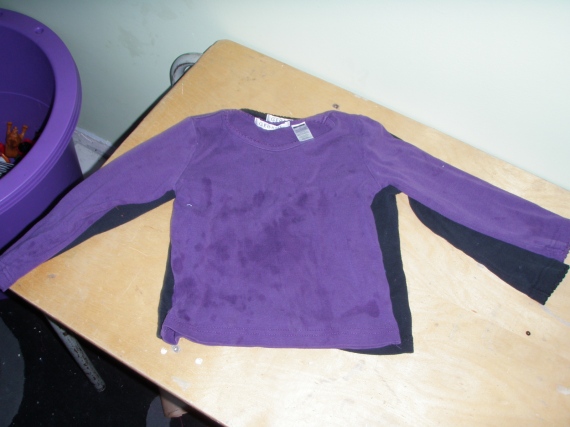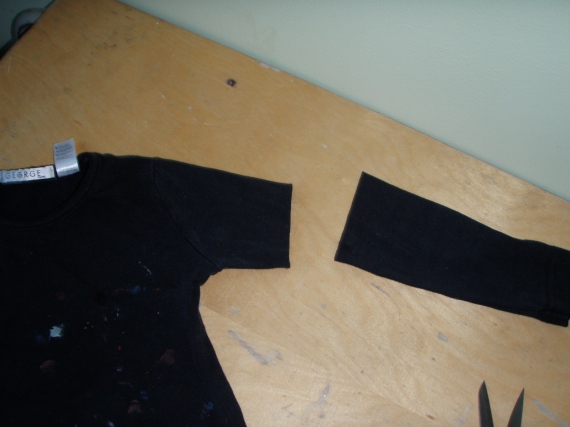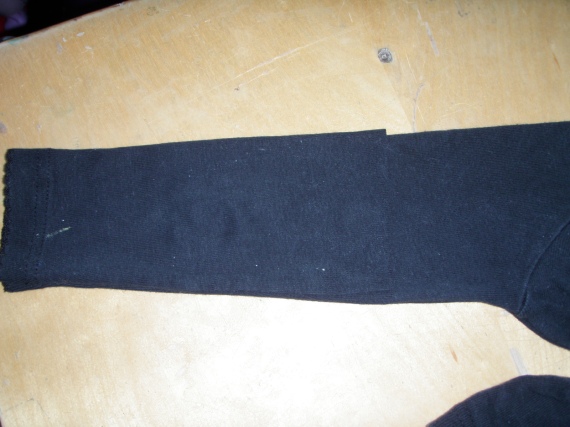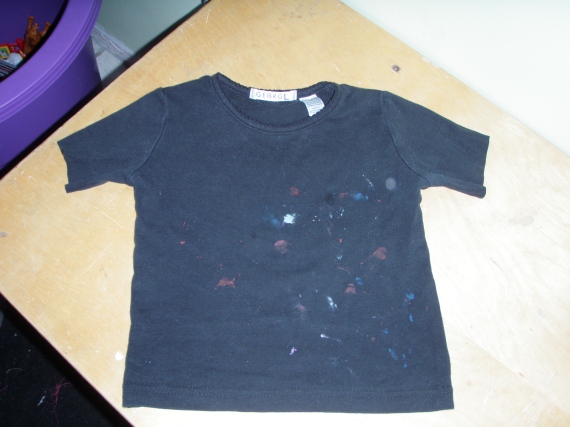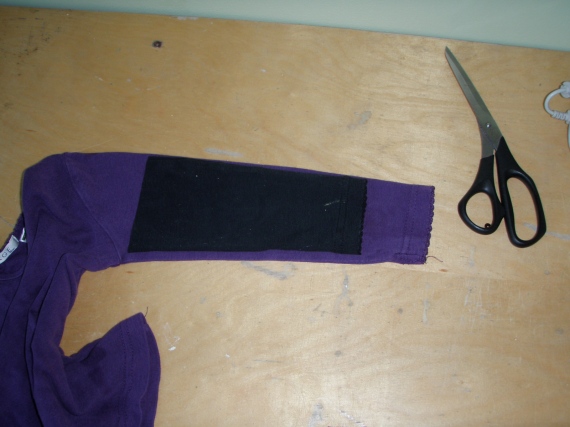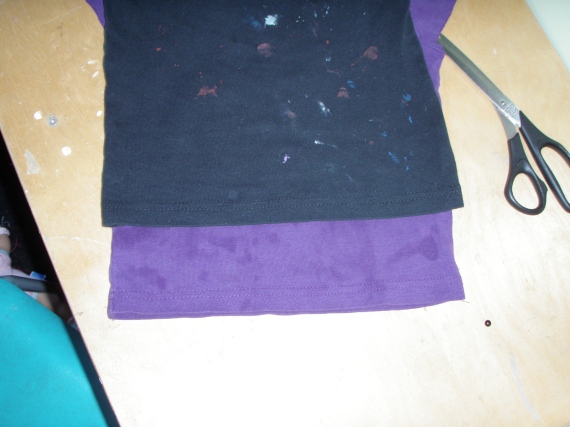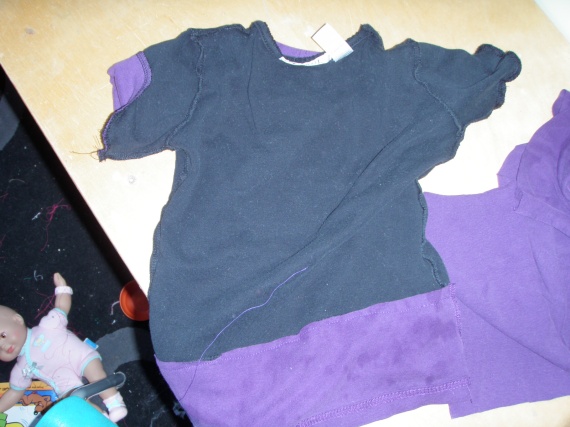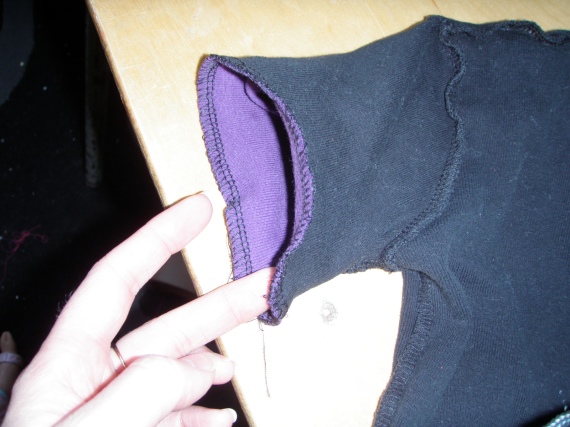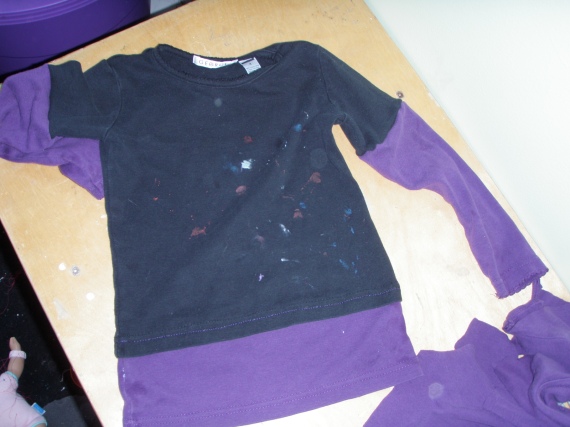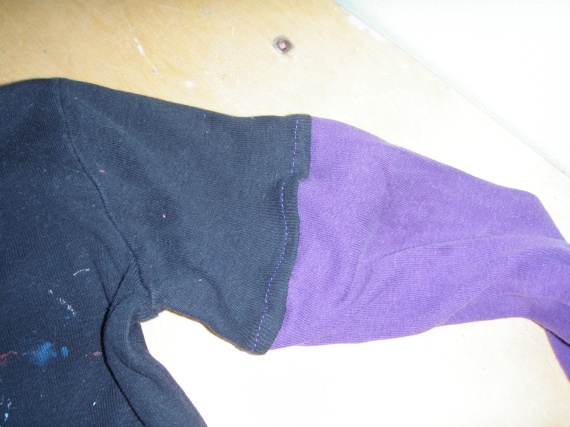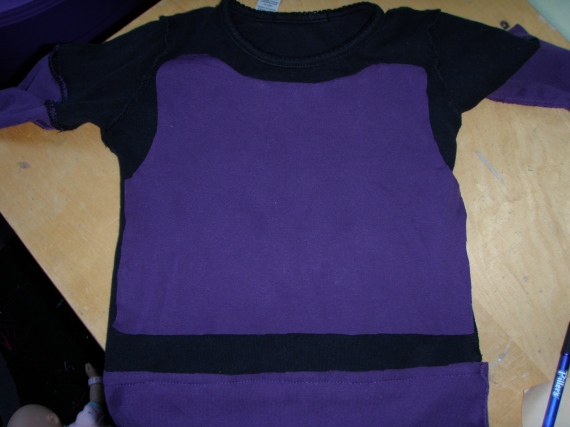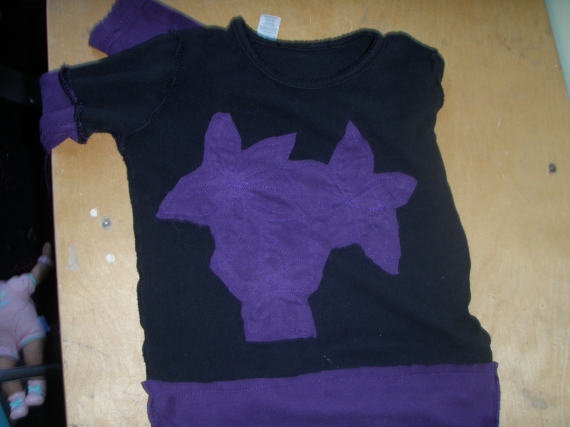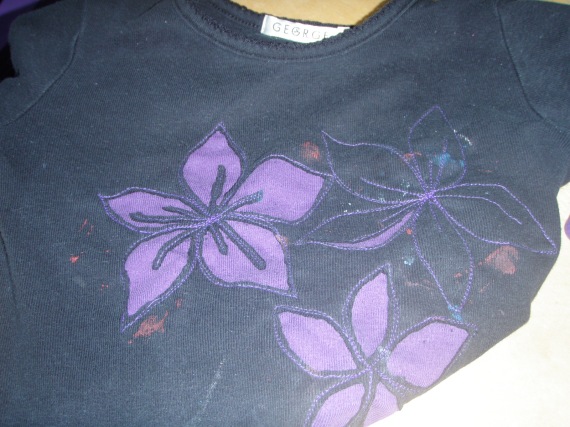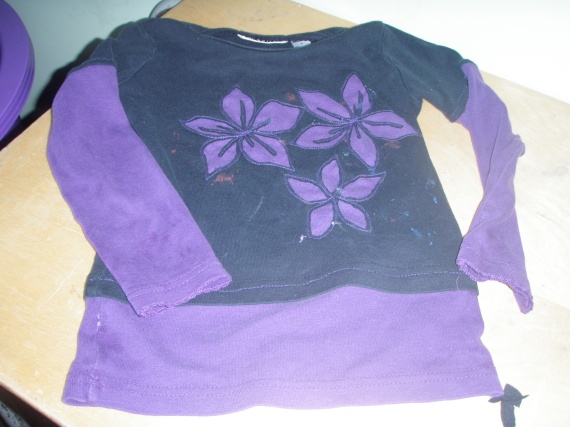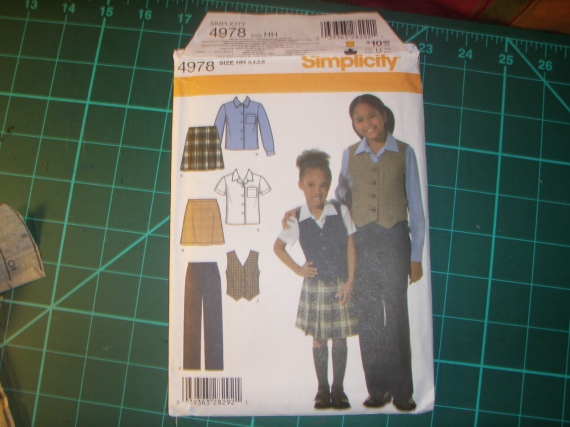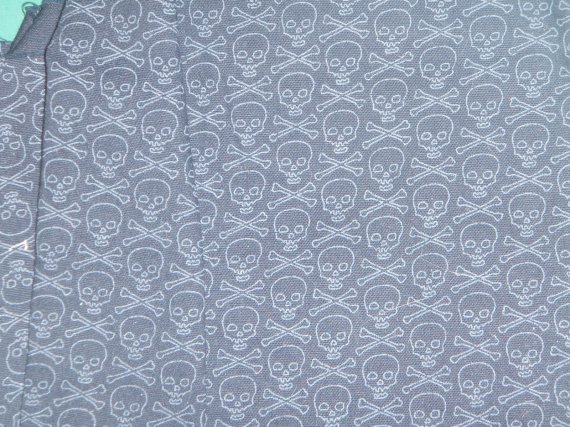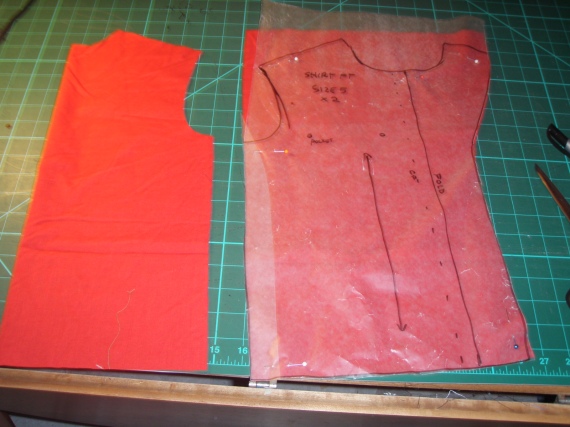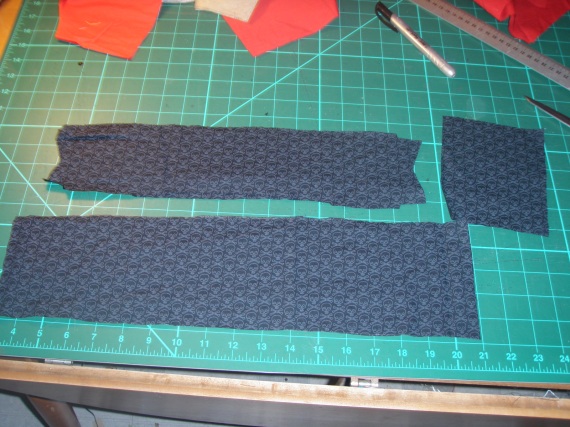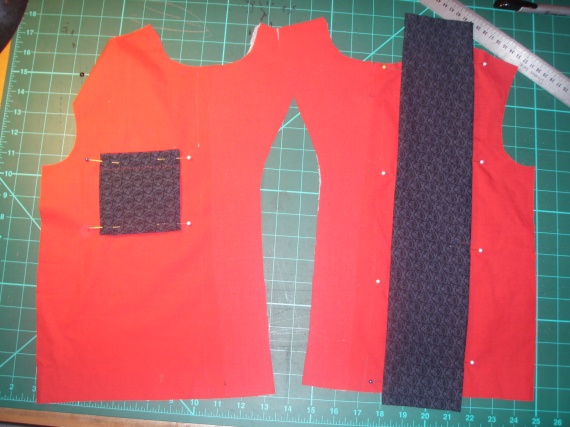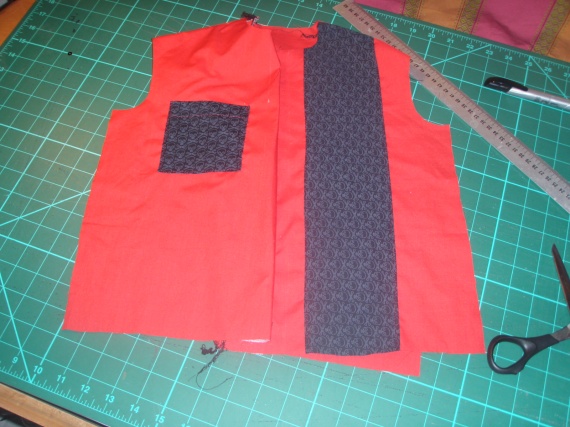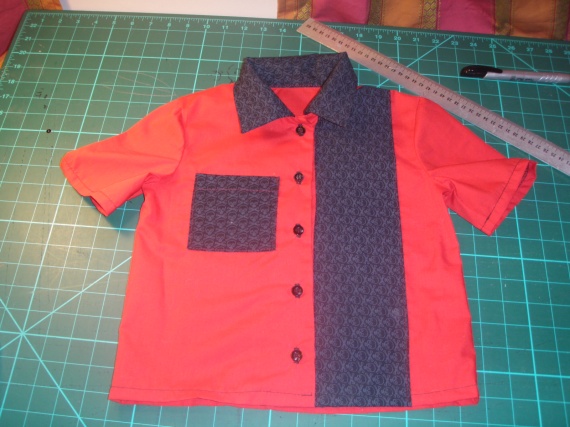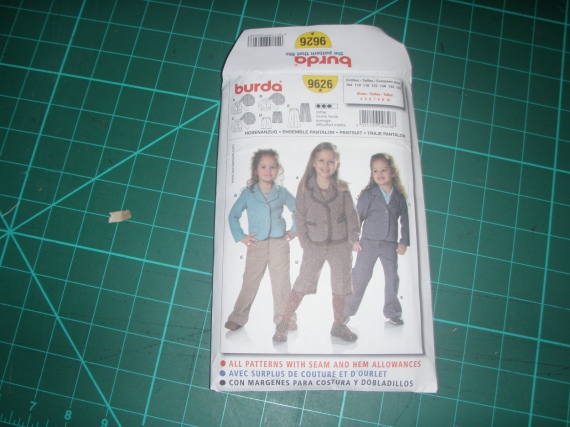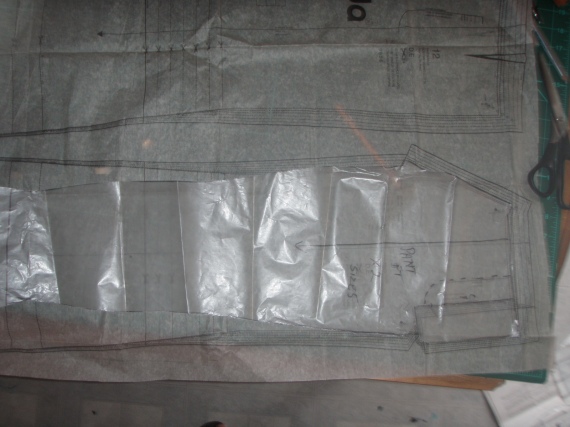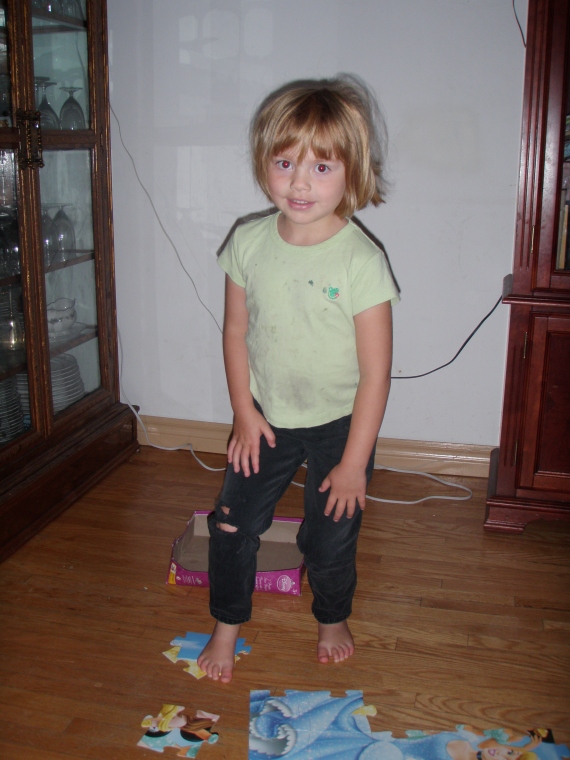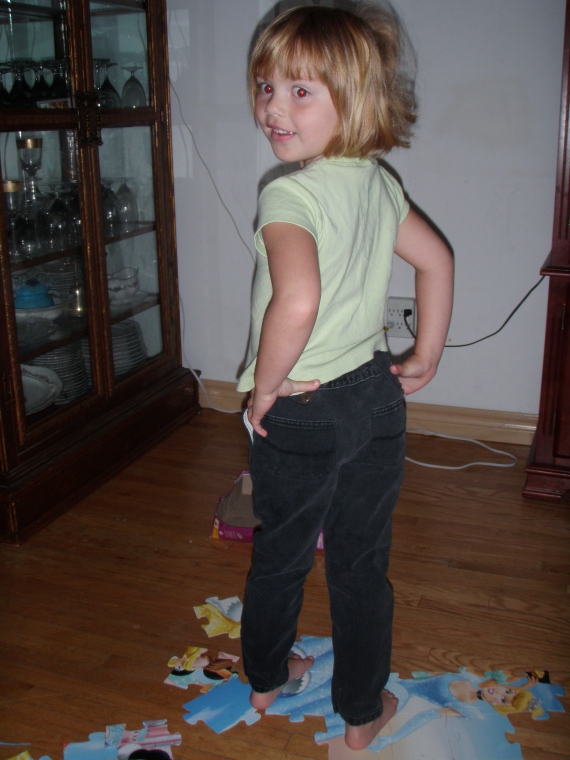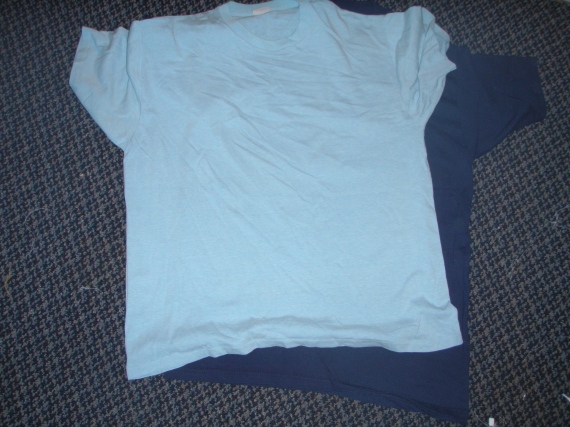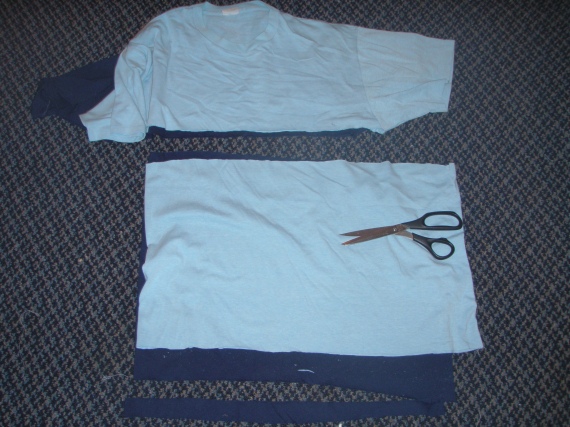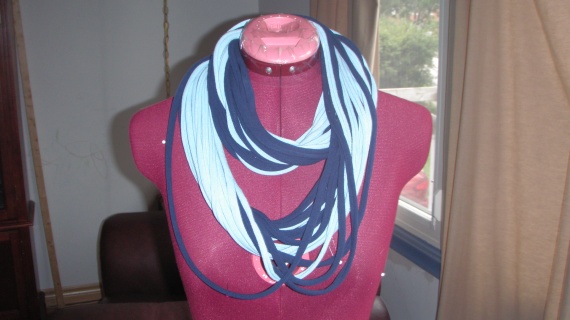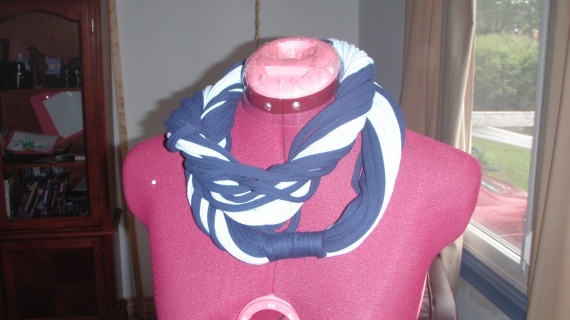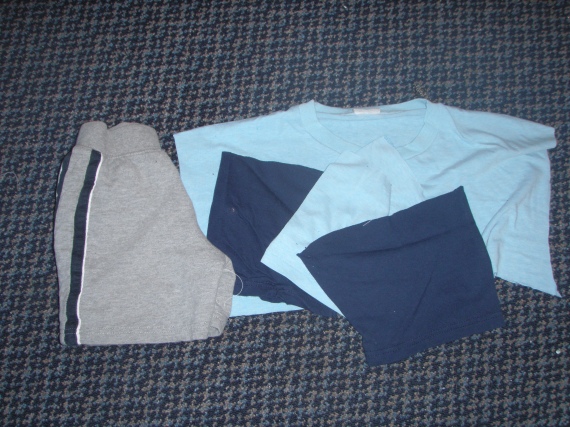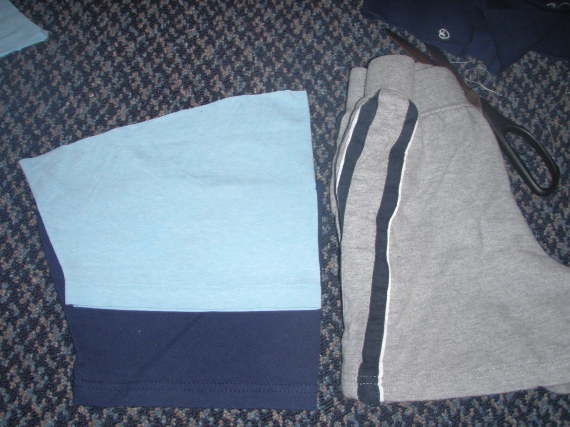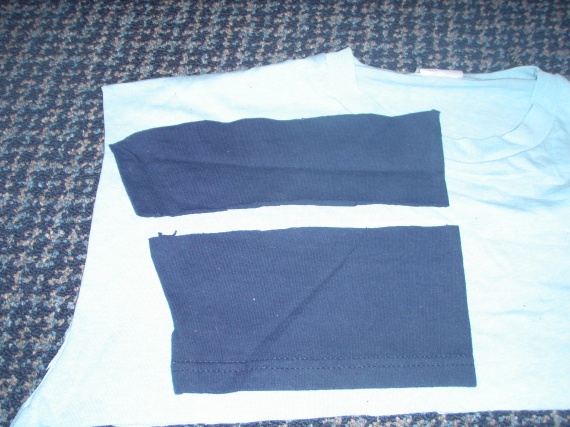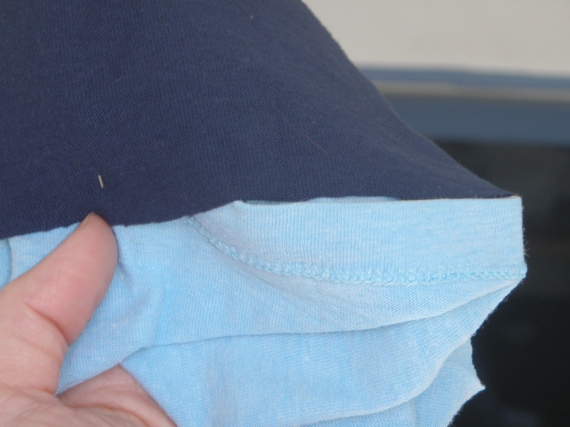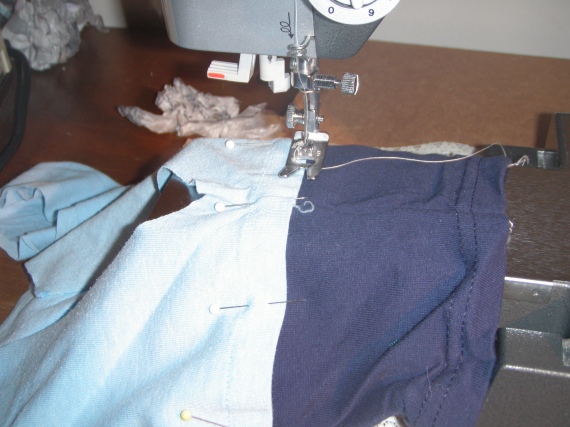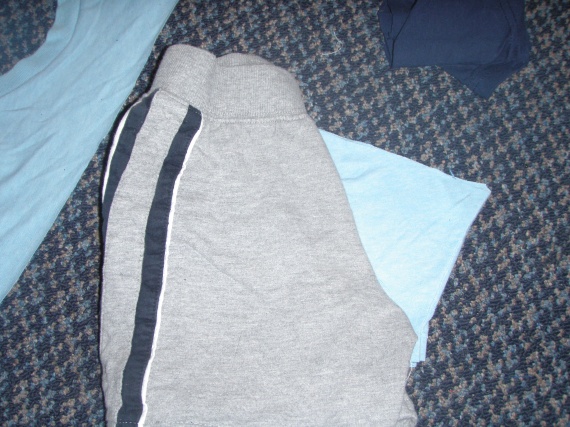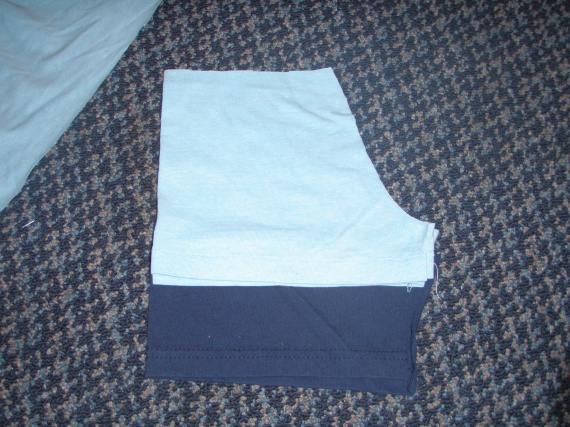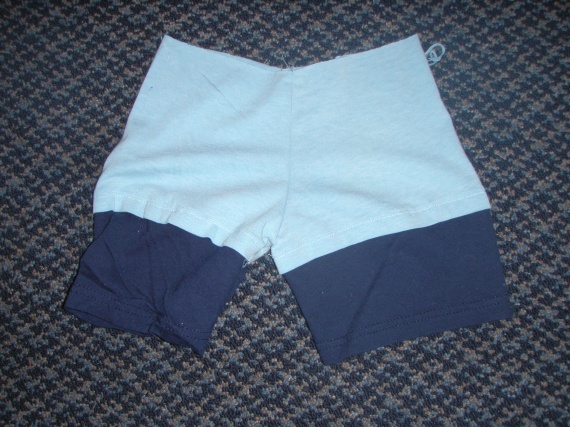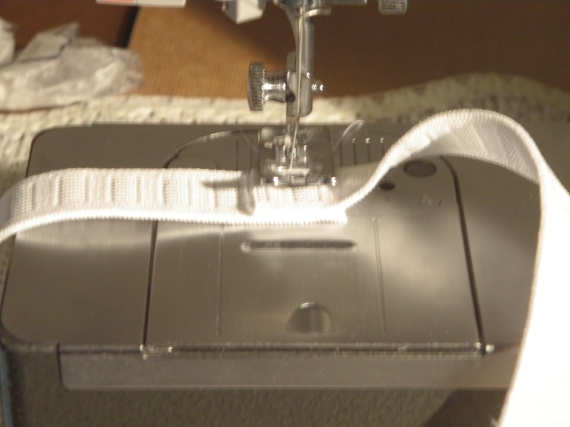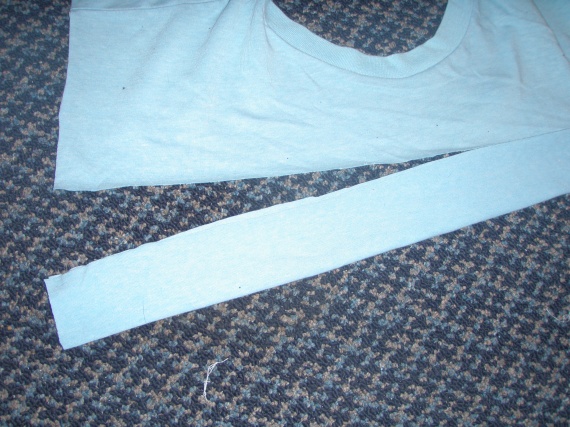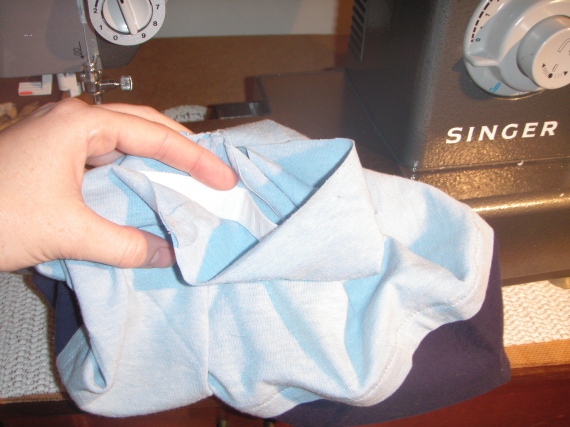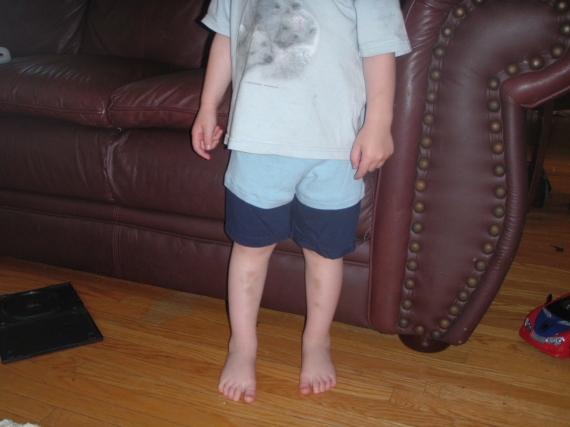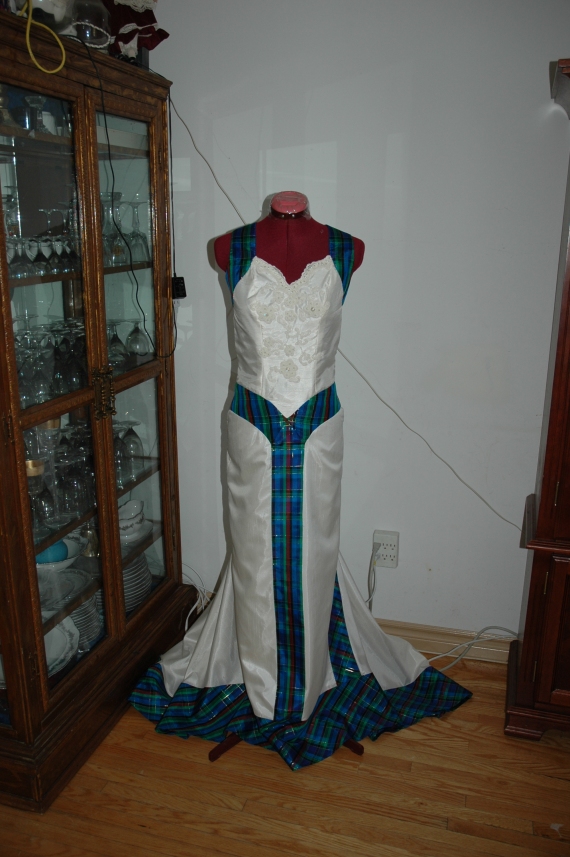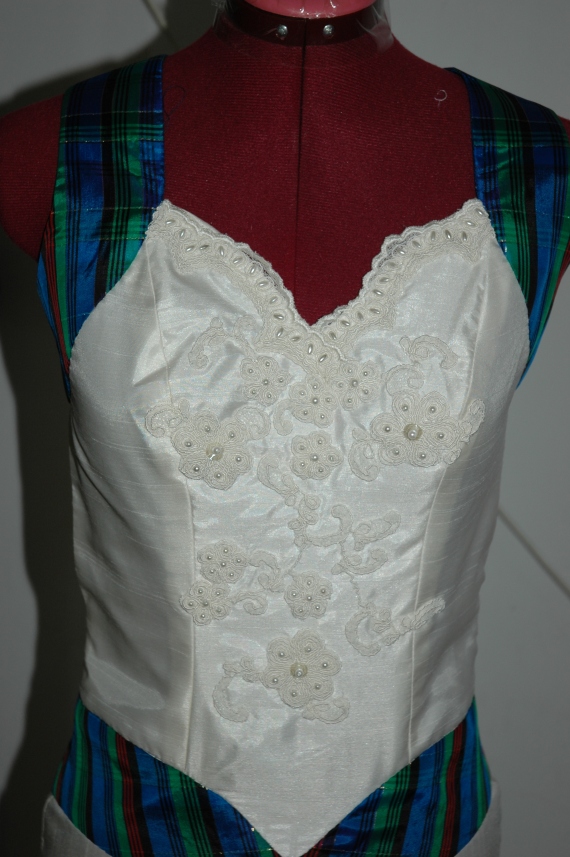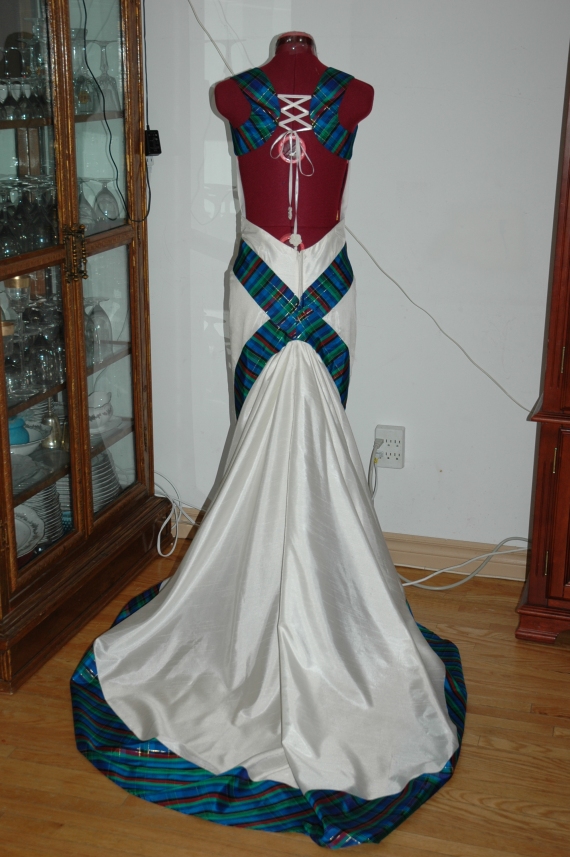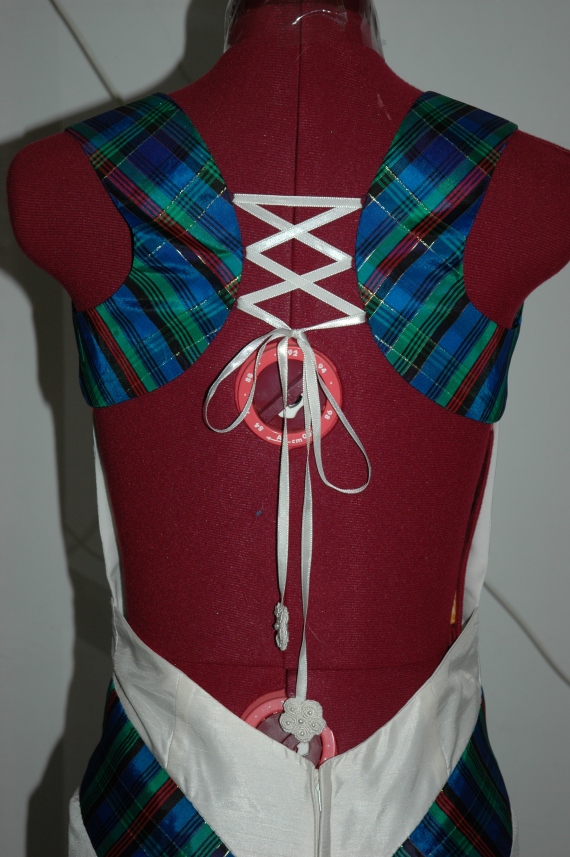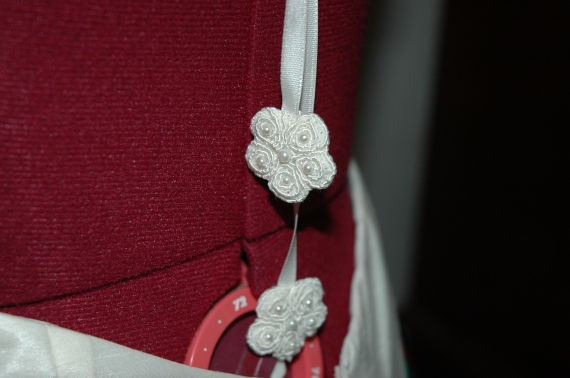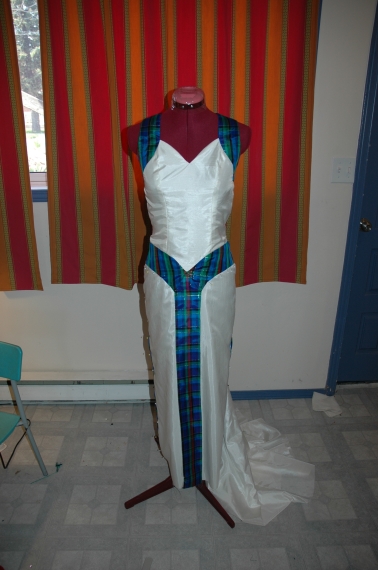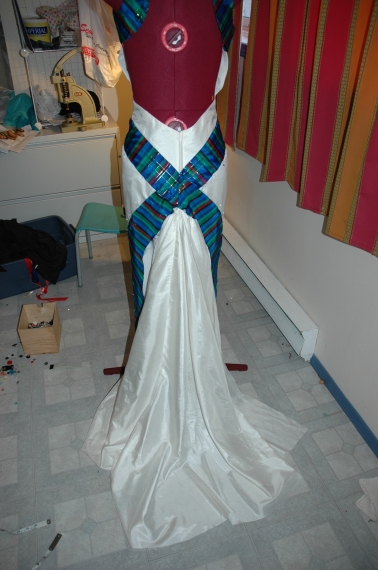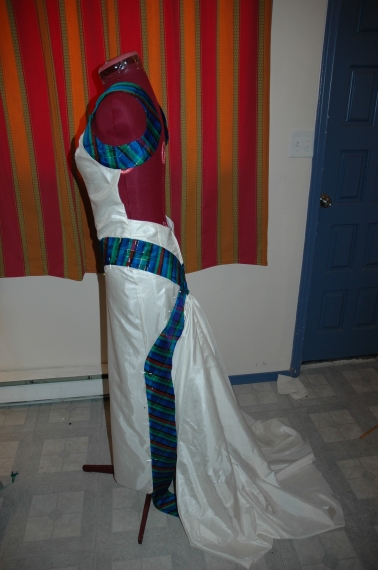Me neither. So when I decided to make hats for the kids I found myself pondering the mystery of pi.
Tools for this project:
a calculator or you can be brave and do this on paper
marking pencil
ruler
paper
old pair of jeans and/or some fabric scraps (you need about .5 meter of two different fabrics, one for the outside of the hat and one for the lining)
scissors (both paper and fabric)
First things first, measure the head of the person you are making the hat for. I was making one for my son and one for my daughter. Their heads both measured 20″ (50cm).
Write that number down for reference. Next, using your calculator (or your significantly superior brain if you are doing this on paper) and divide that number by 3.14 (pi). This will give you the diameter of the circle for the top of the crown of your hat. I remeasured my circle circumference just to check and it was pretty close, but I suggest remeasuring before you continue to make your patter pieces just to make sure.
To make the circle for the crown top, I took my piece of paper and marked a dot in the middle, this is the middle of my circle. If you happen to still have your old geometry set from high school (or may be you kids have one) you can use the compass to draw your circle. If you don’t, just use your ruler, place ‘0’ on the dot and keep moving it around to create your circle. Don’t forget to divide your diameter in half so you get the radius, otherwise you will make the circle too big.
Here’s my math: 20″ divided by 3.14 equals 6 3/8″ diameter (radius = 3 1/8), or 50cm divided by 3.14 equals 16cm diameter (radius = 8cm).
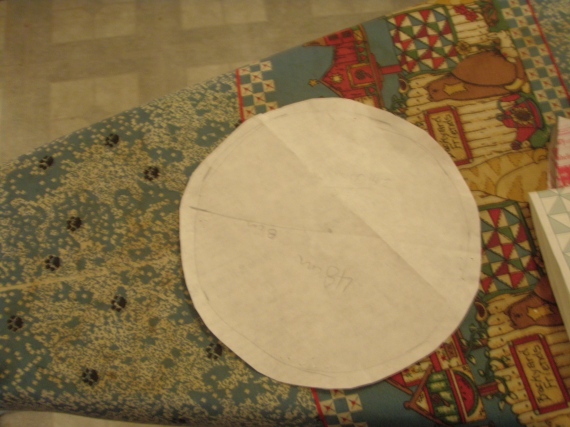
I added about 1/2″(1 cm) seam allowance.
Next I made the pattern for the crown. The length is going to equal the circumferance of your circle and the width can be whatever you want it to be. My measurements worked out to this: length equals 20″ plus 1″ seam allowance (50cm plus 2cm seam allowance). For the width I measured 3″ (7.5cm).
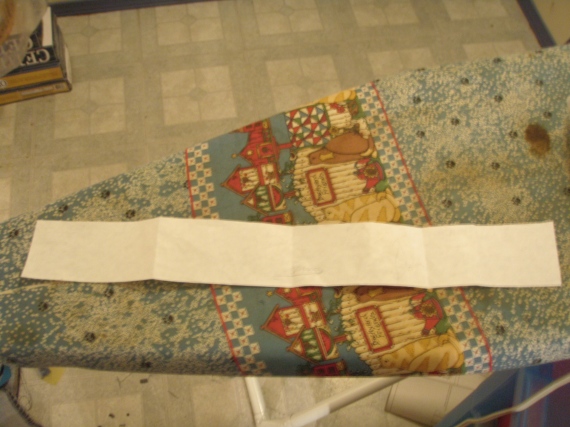
For the brim I cheated a little to figure out the measurment. I have a chart in my college drafting book to help figure out meausrments for circles. Here’s a little exerpt that should help you with figureing your own measurements. This is in inches. I’ll explain converting inches to centimeters at the end of the post.
distance covered 1/4 circle 1/2 circle 3/4 circle full circle
18 11 1/2 5 3/4 3 3/4 2 7/8
19 12 1/8 6 1/8 4 1/8 3
20 12 3/4 6 3/8 4 1/4 3 1/8
21 13 3/8 6 5/8 4 1/2 3 3/8
22 14 7 4 5/8 3 1/2
23 14 5/8 7 1/4 4 7/8 3 5/8
24 15 1/4 7 5/8 5 1/8 3 3/4
25 15 7/8 7 7/8 5 1/4 3 7/8
So I’m sure you are now wondering how the heck to use this chart. Get a large piece of paper and mark the center of one edge. I used the 1/2 circle since I was aiming for a not too floppy brim. In the first column for distance covered I looked for the measurment that matched the circumference of the hat crown (20″) and then looked at the 1/2 circle measurement since I didn’t want a brim that was too floppy but not too straight. The radius for the inside of my brim would then be 6 3/8 inches. On the paper, using the mark you made as the center point, use your compass or ruler to measure the radius. You should have drawn a half circle. This is the inside of your brim and should match the circumference of the crown. Don’t forget to draw in 1/2 inch (1cm) seam allowances.
Next I decided how wide I wanted my brim and marked down another 3 inches from the inside of the brim. Again, dont forget to add seam allowance.
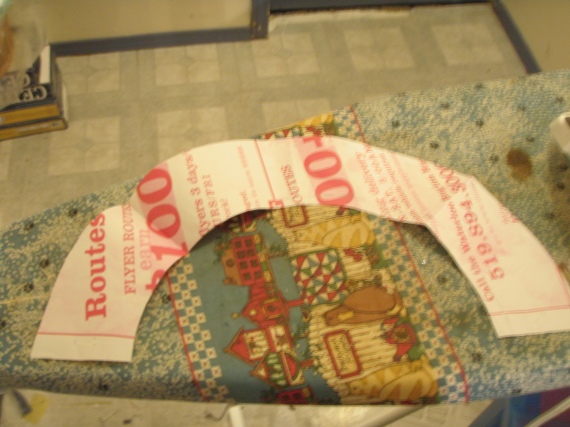
So you should have the three pattern pieces needed to make the hat. I cut out two sets of each pattern piece, for each hat. The first set I cut from an old pair of jeans for the outside of the hat. The second set I cut from a scrap of cotton fabric for the lining of the hat.
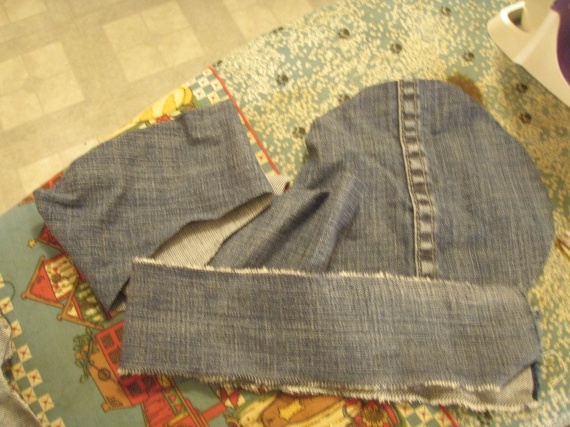
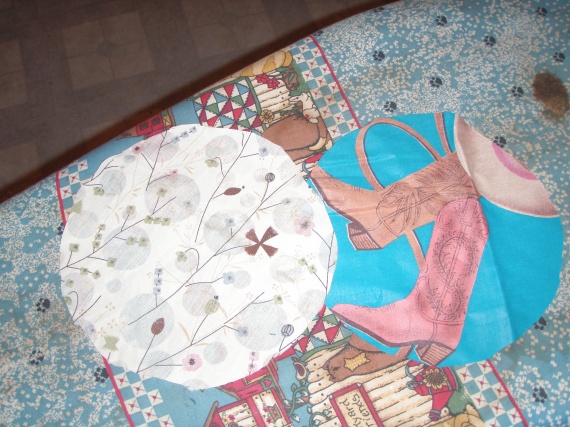
Next I put the brim pieces together. Fold your brim in half, right sides together and stitch across the end. Do this to the brim lining piece as well. Press the seam allowance open or to one side.
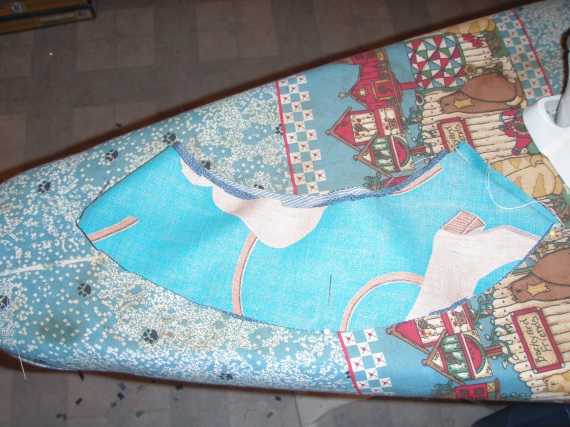
Place your brim and brim lining together, right sides, and stitch around the outer edge. Clip the seam allowance, turn right sides out and press.
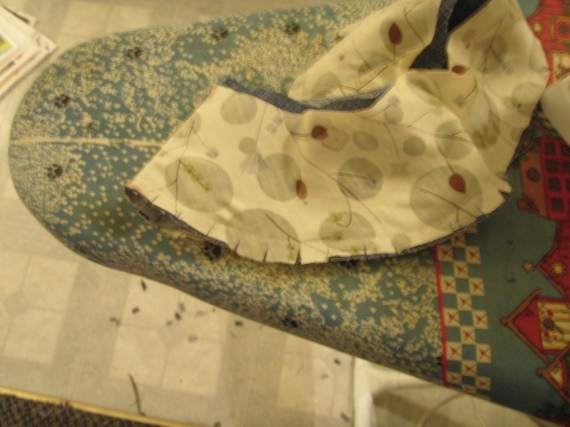
I topstitched around the edge after pressing.
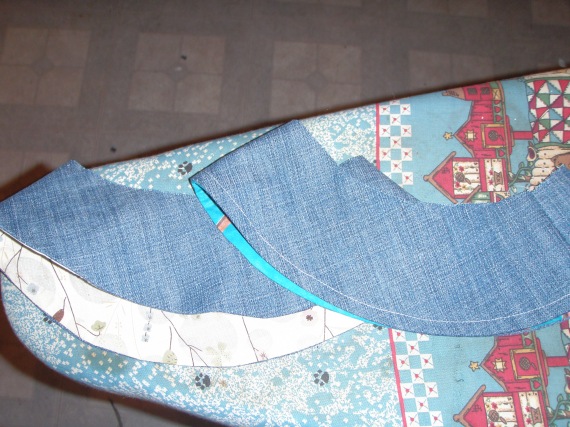
Next I took the crown piece and folded it in half, right sides together and stitched the ends. I pressed the seam allowance to one side. Do this with the crown lining as well.
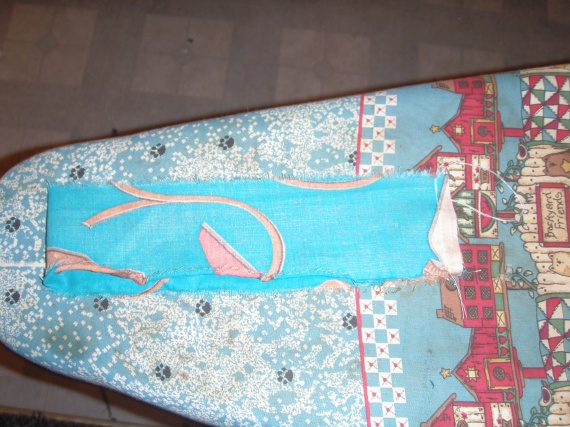
I marked the crown in quarters using pins and marked the crown top in quarters as well. I then pinned the crown to the crown top, matching the markings. I stitched the two pieces together and then did the same with the lining pieces.
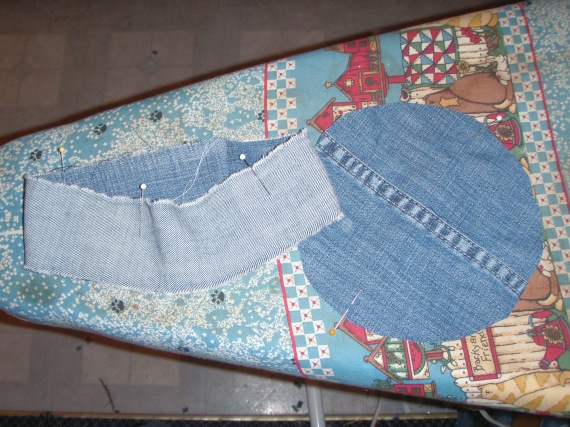
You can clip if you want, I didn’t find it necessary though and I just pressed the seam allowance down.
Mark the crown in quarters again and mark the inside brim edge in quarters. Put the two pieces together and stitch around. I trimmed the seam allowance to even it up but you don’t have to do this.
Next I wanted to put the lining on in a way that reduced the amount of hand stitching I might have to do. So I marked the crown lining in quarters and marked the inside of the hat in quarters again. I put the right sides together and pinned it at the markings. The hat should be completely inside the crown lining. I stitched around the edge and left an opening so I could turn it out. After pressing I was going to hand stitch but then I got an idea that would eliminate all hand sewing. 🙂
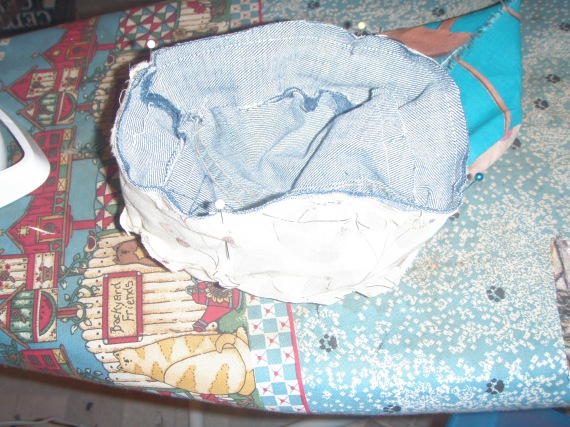
I turned in the seam allowance on the opening and pinned it closed. I then edge stitched around this seam line from the outside. This closed the hole in the lining, keeps the lining from flipping out and looks nice. yay!
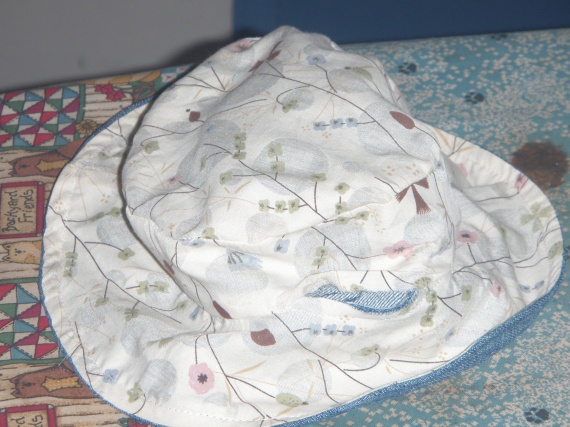
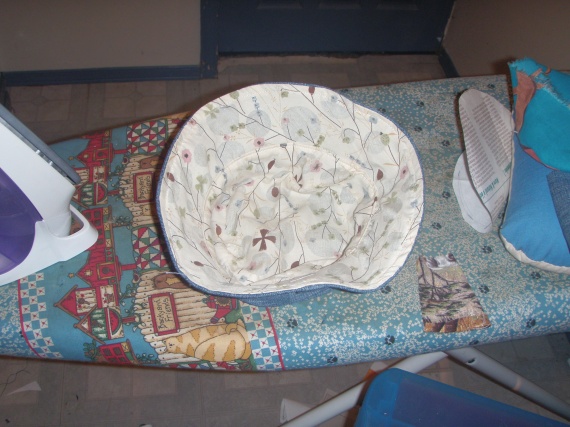
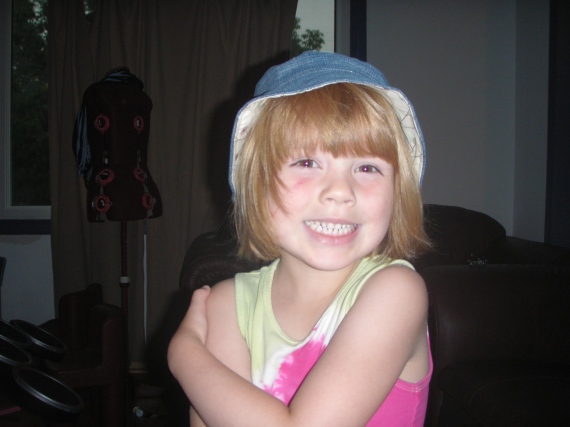
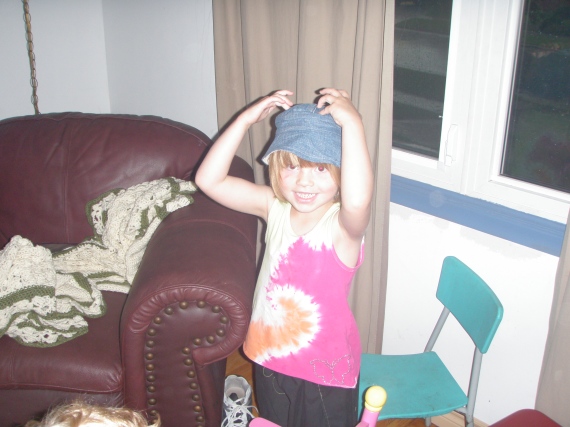
Finished hat!
Some thoughts on this project:
I might consider making the crown a little wider, maybe 4 inches.
You can do decorative stitching on the brim, add eyelets for vent holes, put pockets etc. This is such a basic hat.
If you want a floppier brim, use the measurment for the 3/4 or full circle and you can make the brim wider too.
If you are using a lighter weight fabric for your hat, you may want to consider using a stiff interfacing to give it some body.
How to convert inches to centimeters.
Basically 1 inch equal 2.5 centimeters. So to convert from inches to centimeters, simply multiply by 2.5. To convert from centimeters to inches, divide by 2.5. simple. When dealing with fractions for inches you simply divide the top number by the bottom one but here are the decimals to make things easier.
1/8″ = .125, 1/4 = .25, 3/8 = .375, 1/2 = .5, 5/8 = .625, 3/4 = .75, 7/8 = .875
